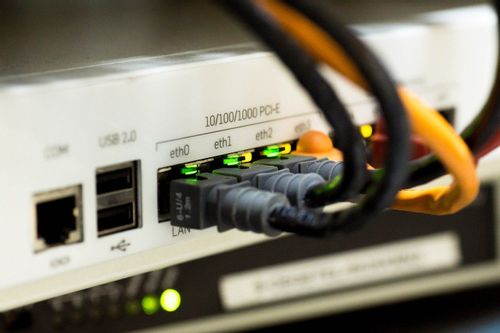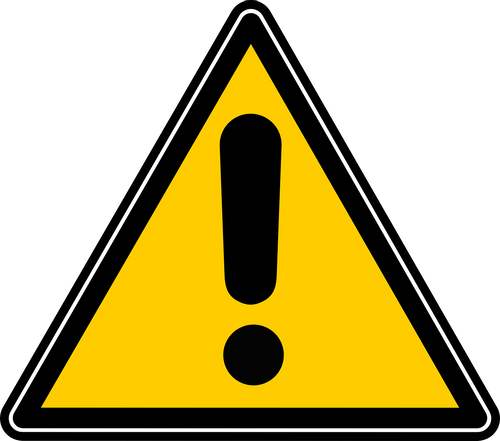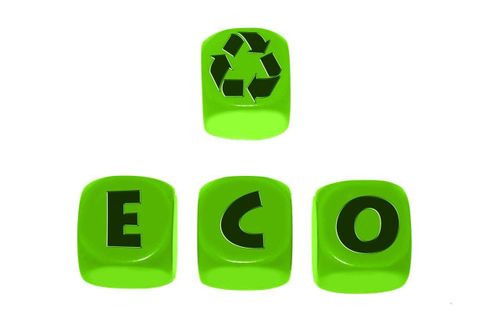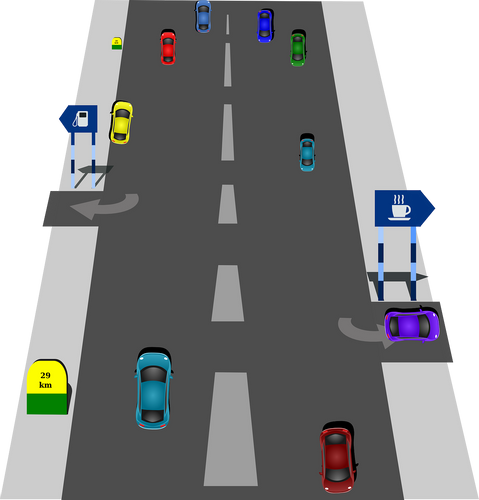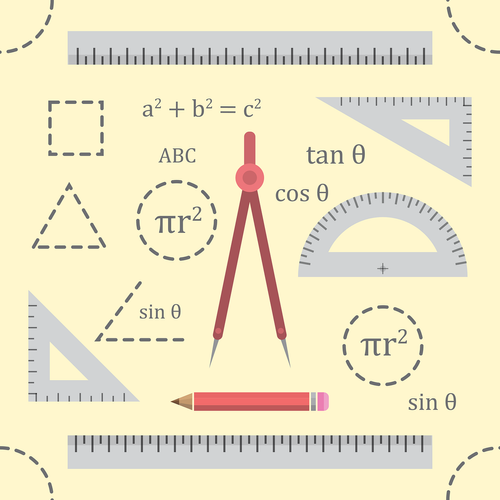Standards Packages
iTeh together with SIST has developed and compiled a comprehensive collection of standard packages to support your standard requirements. Our packages cover an array of content that includes quality management, risk management, road vehicles, machine safety, and much more. With over 200 packages to choose from, you are sure to find a collection to suit your standard needs.
Latest Standards
This document defines terms used in digital imaging.
- Standard5 pagesEnglish languagesale 15% off
- Standard10 pagesEnglish languagesale 10% offe-Library read for1 day
This document specifies graphical symbols for diagrams related to industrial components, products and processing.
This document constitutes a symbol library, from which users can use the symbols or created symbol examples for use in diagrams (see Tables 1 to 149).
General rules and guidance for the preparation and presentation of graphical symbols are given in ISO 14617-1. Application rules for the symbols are shown in normative Annex A.
This document does not apply to:
— graphical symbols for fluid power objects, see ISO 1219-1 (the collective application standard of the ISO 14617 series);
— symbols of measurement and control functions such as mathematical functions and process functions;
— graphical symbols for electrotechnical objects, see the IEC 60617 database.
Symbols deleted from the previous edition of the ISO 14617 series are summarized in informative Annex B as a reference. The alphabetic index of symbols defined in this document is shown in informative Annex C.
- Standard248 pagesEnglish languagesale 10% offe-Library read for1 day
- Standard237 pagesEnglish languagesale 15% off
This document specifies the procedure for classification of the resistance to fire performance of construction products and building elements used as components of building service installations, using data from fire resistance tests which are within the direct field of application of the relevant test method. Classification on the basis of extended application of test results is also included in the scope of this document.
Construction products or building elements for use in ventilation systems include (excluding smoke control system):
— fire resisting ventilation ducts;
— fire dampers.
Construction products or building elements for use in or as cables systems:
— unprotected electric cables with intrinsic fire resistance;
— fire protective systems for cable systems and associated components.
Relevant test methods which have been prepared for these construction products/building elements are listed in Clause 2.
NOTE Cables associated with fire dampers are not generally covered by this document unless there is a local regulation that requires it.
- Standard29 pagesEnglish languagesale 10% offe-Library read for1 day
- Amendment8 pagesEnglish languagesale 10% offe-Library read for1 day
This document specifies viewing conditions for images on both reflective and transmissive media, such as prints (both photographic and photomechanical) and transparencies.
This document applies to
— critical evaluation of and comparison between transparencies, backlighted signs, reflection photographic or photomechanical prints and/or a reference object or image,
— appraisal of the tone reproduction and colourfulness of prints and transparencies at illumination levels similar to those for practical use, including routine inspection, and
— critical appraisal of transparencies which are viewed by projection, for comparison with prints, objects, or other reproductions.
This document is not applicable to soft-proofing displays, for paper manufacture, and other applications outside of graphic technology and photography.
- Standard36 pagesEnglish languagesale 10% offe-Library read for1 day
- Standard29 pagesEnglish languagesale 15% off
- Draft29 pagesEnglish languagesale 15% off
- Draft29 pagesEnglish languagesale 15% off
This document gives guidance on how to promote and implement gender equality and women’s empowerment. It provides guidelines for organizations to develop the capabilities to achieve a culture of gender equality and women’s empowerment. The guidelines include the framework, resources, policies, tools and good practices for contextualizing, promoting and implementing gender equality.
This document focuses on the inequality resulting from the gender specific roles assigned to women, girls, men and boys and is applicable to all types of organizations (public or private), regardless of their size, location or field of activity.
This document does not address the specific aspects of relations with labour unions or work councils, nor the country-specific regulations and compliance relating to gender diversity.
- Standard60 pagesEnglish languagesale 10% offe-Library read for1 day
This document specifies a method for the separation of fatty acid methyl esters (FAME) from middle distillates by liquid chromatography (LC) and for the determination of the pattern of the fatty acid methyl esters by gas chromatography (GC) according to EN 14103.
This document is applicable for the determination of the pattern of the fatty acid methyl esters for the calculation of the average molecular mass of FAME according to EN 14078 [1].
Independently from the origin of the middle distillate, this method is applicable to FAME of vegetable or animal origin that contain fatty acid methyl esters between C6:0 and C24:1. The method is suitable for the separation and determination of FAME from middle distillates with FAME contents of at least 2 % (V/V).
NOTE For the purpose of this document, the terms % (V/V) and % (m/m) are used to express volume fractions in % or mass fractions in %.
- Standard9 pagesEnglish languagesale 10% offe-Library read for1 day
IEC 62508: 2025 provides guidance on current knowledge and practice concerning dependability in an operational environment, in terms of the humans, teams and organizations involved in conducting the work. It is part of a suite of IEC standards that are intended to address the dependability of both the technical and human elements of equipment and organizations.
This document describes the human elements of a typical operational system, and the importance of those elements to overall dependability. It also describes the means of assessing how well these elements are functioning, and general concepts on how the reliability of humans can be improved. These elements typically include the individual workers, the groups or teams into which they are organized, the interfaces between humans and technical systems, and the overall organization.
The following guidance is applicable to any industry that depends on human-systems interactions involving the technology, software, or systems of work required to support the production and safety objectives of an organization. This document primarily addresses complex technical systems, but some parts are also applicable to the manufacturing of industrial and consumer products. Principles for design of the human-machine interface (usability) are described, and further information can be found in the technical literature and in relevant product standards. Although this document does not specifically cover worker health or safety, the application of this document can raise related issues, particularly in process safety, which is closely associated with system reliability.
This second edition cancels and replaces the first edition published in 2010. This edition constitutes a technical revision.
This edition includes the following significant technical changes with respect to the previous edition:
a) The emphasis on user-centred design in the previous edition was reduced in favour of a greater emphasis on human dependability in an existing operational environment.
b) The emphasis on human error and error-rate determination methods was reduced in favour of a greater emphasis on means of providing organizational support for the workforce in their execution of required tasks.
c) Where appropriate, discussions of human factors in an operational environment were aligned with current theory, terminology and practice.
- Standard62 pagesEnglish languagesale 10% offe-Library read for1 day
Plastic waterproofing sheets generate plastic waste at different stages during their life cycle: production, construction process, service life and end-of-life.
This document specifies the source of recyclate made from pre-consumer material and post-consumer material as it is used in new products. These new products can be plastic waterproofing sheets, other sheets, other construction products or other products.
It defines terms and definitions.
It gives guidance for assessing the recyclates intended for use in the production of new products.
This document is applicable for similar products as construction sheets or membranes consisting of polymers or plastic components such as: swimming pool membranes, geosynthetic membranes, garden ponds membranes, protection membranes, accessories based on thermoplastic material such as walkways, prefabricated pieces. The listing is not exhaustive.
NOTE The design for recycling of packaging, including the recycling itself, is defined in the CEN/TC 261 “Packaging”.
- Standard17 pagesEnglish languagesale 10% offe-Library read for1 day
NEW! IEC 61071:2017 is available as IEC 61071:2017 RLV which contains the International Standard and its Redline version, showing all changes of the technical content compared to the previous edition.
IEC 61071:2017 applies to capacitors for power electronics applications. The operating frequency of the systems in which these capacitors are used is usually up to 15 kHz, while the pulse frequencies may be up to 5 to 10 times the operating frequency. The document distinguishes between AC and DC capacitors which are considered as components when mounted in enclosures. This document covers an extremely wide range of capacitor technologies for numerous applications, e.g. overvoltage protection, DC and filtering, switching circuits, energy storage, auxiliary inverters, etc. This second edition cancels and replaces the first edition published in 2007. This edition constitutes a technical revision. This edition includes the following significant technical changes with respect to the previous edition:
- Introduction of new terms and definitions;
- clarifications for surge discharge test;
- indications for measuring procedure during thermal stability test;
- clarifications for self-healing test;
- clarifications for endurance test;
- clarifications for destruction test;
- update of normative references;
- general editorial review.
- Standard50 pagesEnglish languagesale 10% offe-Library read for1 day
IEC 60931-1:2025 is applicable to both non-self-healing capacitor units and non-self-healing capacitor banks intended to be used, particularly, for power-factor correction of AC power systems having a rated voltage up to and including 1 000 V and frequencies 15 Hz to 60 Hz. This document also applies to capacitors intended for use in power filter circuits.
- Draft36 pagesEnglish languagesale 10% offe-Library read for1 day
IEC 63297:2025 provides a classification of NILM sensing devices for use in NILM systems, according to the state of the art of NILM technologies.
- Draft22 pagesEnglish languagesale 10% offe-Library read for1 day
IEC 62198:2025 provides principles and generic guidelines on managing risk in projects. In particular it describes a systematic approach to managing risk in projects based on ISO 31000. Guidance is provided on the principles for managing risk in projects, the framework and organizational requirements for implementing risk management, and the process for conducting effective risk management. This third edition cancels and replaces the second edition, published in 2013, and constitutes a technical revision. This edition includes the following technical changes with respect to the previous edition: a) now aligned with ISO 31000, Risk management - Guidelines and ISO 21502, Project, programme and portfolio management - Guidance on project management. b) the principles and generic guidelines on managing risk in projects have been updated to take into account developments in risk management and leadership, with particular reference to implementing risk management within the broad scope of project management envisaged by ISO 21502, including project-related oversight and direction by the sponsoring organization.
- Draft46 pagesEnglish languagesale 10% offe-Library read for1 day
IEC 63402-1:2025 specifies general requirements and the architecture between the Point of Common Coupling (PCC) and smart devices (SD) operating within the Smart Grid premises-side system (i.e. residential or commercial but not industrial premises). This document does not include requirements for: - safety - electromagnetic compatibility (EMC); - data security, as it is assumed that the underlying protocols will take the data security aspect into account - special equipment (e.g. legacy heat pumps) with a direct physical connection to the grid, as such equipment bypasses the customer energy manager (CEM) and is not HBES/BACS enabled (covered by other standards than the IEC 63402 series). This group EE publication is primarily intended to be used as an EE standard for the products mentioned in the scope, but is also intended to be used by TCs in the preparation of publications for products which are included in the boundary mentioned in the scope of this document. It has the status of a group energy efficiency publication in accordance with IEC Guide 118.
- Draft32 pagesEnglish languagesale 10% offe-Library read for1 day
- Standard10 pagesEnglish languagesale 15% off
- Draft10 pagesEnglish languagesale 15% off
- Draft10 pagesEnglish languagesale 15% off
IEC 60931-2:2025 applies to capacitors according to IEC 60931-1 and gives the requirements for the ageing test and destruction test for these capacitors.
- Draft8 pagesEnglish languagesale 10% offe-Library read for1 day
This document specifies a procedure for determining the emissivity at room temperature of the surfaces of glass and coated glass. The emissivity is necessary for taking into account heat transfer by radiation from surfaces at the standard temperature of 283 K in the determination of the U value and of the total solar transmittance of glazing according to REF [5] \r \h ISO 9050[5] 08D0C9EA79F9BACE118C8200AA004BA90B0200000008000000040000005B0035005D000000 , REF [6] \r \h ISO 10291[6] 08D0C9EA79F9BACE118C8200AA004BA90B0200000008000000040000005B0036005D000000 , REF [7] \r \h ISO 10292[7] 08D0C9EA79F9BACE118C8200AA004BA90B0200000008000000040000005B0037005D000000 , and REF [8] \r \h ISO 10293[8] 08D0C9EA79F9BACE118C8200AA004BA90B0200000008000000040000005B0038005D000000 . The procedure, being based on spectrophotometric specular reflectance measurements at near normal incidence on materials that are non-transparent in the infrared region, is not applicable to glazing components with at least one of the following characteristics: a) with rough or structured surfaces where the incident radiation is diffusely reflected; b) with curved surfaces where the incident radiation is regularly reflected at angles unsuitable to reach the detector while using specular reflectance accessories; c) infrared transparent. However, it can be applied with caution to any glazing component provided its surfaces are flat and non-diffusing (see non-diffusing glazing component) and it is non-transparent in the infrared region (see glazing component non-transparent in the infrared region). Although transmittance measurements are included in this document, they are only necessary to check if the specimen is non-transparent in the infrared region in the context of this document (see glazing component non-transparent in the infrared region). If the specimen is transparent in the infrared region, this document is not applicable.
- Standard16 pagesEnglish languagesale 15% off
- Draft16 pagesEnglish languagesale 15% off
- Draft16 pagesEnglish languagesale 15% off
IEC 60794-1-133: 2025 defines the test procedure to demonstrate the ability of an optical fibre cable to withstand multiple coiling and uncoiling on a specified diameter of cable reel. This test is primarily intended to evaluate the performance of cables for mobile rapid or multiple deployment. See IEC 60794‑1‑2 for a reference guide to test methods of all types and for general requirements. This first edition of IEC 60794-1-133 cancels and replaces Method E33 of the second edition of the IEC 60794-1-21:2015/AMD1:2020, which will be withdrawn. It includes an editorial revision, based on the new structure and numbering system for optical fibre test methods.
- Draft11 pagesEnglish languagesale 10% offe-Library read for1 day
IEC 63267-3-81: 2025 defines the dimensional limits of an optical interface for reference connectors with rectangular ferrules necessary to meet specific requirements for fibre-to-fibre interconnection of non-angled polished multimode reference connectors with rectangular ferrules intended to be used for attenuation measurements as defined in IEC 63267‑2‑2. Ferrule dimensions and features are contained in the IEC 61754 series of fibre optic interface standards.One grade of reference connector is defined in this document. The reference connector is terminated to restricted IEC 60793-2-10 A1-OM2b to A1-OM5b fibre at 850 nm band only. The geometrical dimensions and tolerances of the specified reference connector have been developed primarily to limit the variation in measured attenuation between multiple sets of two reference connectors, and therefore to limit the variation in measured attenuation between randomly chosen reference connectors when mated with connectors in the field or factory.
- Draft17 pagesEnglish languagesale 10% offe-Library read for1 day
IEC 63267-3-61: 2025 defines the dimensional limits of an optical interface for reference connectors with 2,5 mm or 1,25 mm diameter cylindrical zirconia (ZrO2) ferrules necessary to meet specific requirements for fibre-to-fibre interconnection of non-angled polished multimode reference connections as defined in IEC 63267-2-2. Ferrule dimensions and features are contained in the IEC 61754 series of fibre optic connector interface standards. One grade of reference connector, Rm1, is defined in this document. The reference connector is terminated to restricted IEC 60793-2-10 using A1-OM2b to A1‑OM5b fibre in 850 nm band only. The geometrical dimensions and tolerances of the specified reference connector have been developed primarily to limit the variation in measured attenuation between multiple sets of reference connectors, and therefore to reduce the variation in measured attenuation between an arbitrarily chosen reference connector when mated with a connector in the field or factory. This first edition and the first edition of IEC 63267-2-2 cancel and replace the first edition of IEC 61755-6-2 published in 2018. This edition constitutes a technical revision. The document includes the following significant technical changes with respect to the previous edition: a) Definition of a reference grade, Rm1 interface; b) Inclusion of A1-OM2b to A1-OM5b fibres; c) Updates to normative references; d) The addition of Annex A, which describes the attenuation test limits of reference grade Rm1 connectors to grade Bm connectors; e) A new Annex B that describes the allowable fibre undercut.
- Draft13 pagesEnglish languagesale 10% offe-Library read for1 day
Benefits

Full Standards Solution
Our catalog includes not only latest standards but also full meta information about related standardization project lifecycle.

Cost Effective
Our PRICE MATCH GUARANTEE policy with multi-level volume discounts gives our clients the best option in the market. In addition, you can get access to the standards for 3, 10, or 30 days.

Stay Notified
Get alerted to the latest revisions and new standards in the Weekly Newsletter. Standards are constantly changing. Don’t miss a revision that can impact your business.
About Us
iTeh Inc is a software development and IT consulting team of professionals who provide consulting, development and implementation of solutions for all types of businesses.
In cooperation, with the Slovenian Institute of Standardization (SIST), we create a unique solution that covers all aspects of the lifecycle of Standardization organizations. iTeh Standards is a part of the solution that helps SIST to provide and sell their products to Customers.
iTeh Standards Store is an evolving project, our goal is to build long-term relationships with our customers. We believe in delivering quality services to solve our customers' challenges and define success by exceeding our customers' expectations. We are always ready to listen and our experience allows us to provide our customers with helpful effective suggestions. You can contact us by email.
We are committed to providing the best possible experience for our customers.
Compliance with international standards is increasingly becoming one of the key competitive advantages in the global market. Our company creates all conditions for the most comfortable implementation of new documents and norms in the processes carried out by your organization. Some of the key advantages of working with us are:
- Cost-effective - multi-level discounts and permanent updates of the functions give our clients the best option on the market.
- e-Library - access to standards for a period of time of your choice. It is a cost-effective solution for keeping updated with the newest standards.
- Company-wide documents - create a company account and connect all employees with access to purchased standards, e-Library documents, and packages.
- All in one spot - all purchased standards are kept in one place with controlled access by the account administrator.
- Client-centric - providing quality consulting is the prerogative and incentive to create new products that accompany your success and scale.
- 24 / 7 client support
We are dedicated to building mutually beneficial and long-term relationships with our clients. That is why our team focuses on creating services to help our customers develop and achieve new productive results.








